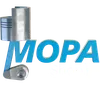JOB TIME SCHEDULE for Documents and Media in Diesel and Marine Engines
Documents and media is a mission‑critical article category that functions as the information backbone for diesel, gas, and marine engines. It includes service manuals, parts catalogs, drawings, specifications, test protocols, calibration certificates, work instructions, commissioning reports, and training media. In modern engine rooms and power plants, these assets are as vital as any mechanical component: they define how work is planned, executed, verified, and recorded across the lifecycle of an engine.
When correctly curated, documents and media turn complex maintenance scopes into repeatable processes. They underpin safe operation, preserve performance, and ensure compliance with class, flag, and site requirements. From a major overhaul to a minor inspection, the right documentation enables a precise JOB TIME SCHEDULE that aligns people, tools, and OEM parts—preventing costly errors and unplanned downtime.
How Documents and media enable a precise JOB TIME SCHEDULE in diesel engine service
The technical function of documents and media is to translate design intent and field experience into actionable, sequenced tasks. A robust JOB TIME SCHEDULE for a diesel engine or marine engine draw on verified manuals, torque and clearance charts, exploded views, and parts lists to create resource-loaded operations. This drives predictability in outage planning by defining man‑hours, required consumables, critical path activities, and inspection gates.
On the shop floor and in the engine room, technicians use step-by-step media—work cards, videos, checklists—to execute procedures exactly as engineered. Quality inspectors reference acceptance criteria and measurement templates. Planners update progress against the JOB TIME SCHEDULE, feeding status back to stakeholders and synchronizing deliveries of OEM parts. The result is a closed loop: documentation informs execution; execution creates traceable records; records improve the next revision of the documents.
For marine engine operators, the JOB TIME SCHEDULE also anchors port stay planning, crew allocation, and coordination with class surveyors. In power generation, it is central to outage windows and load commitments. Across industries, accurate documents and media tighten tolerances on time, cost, and risk.
Key characteristics and advantages of Documents and media
· Verified revision control and traceability across the engine lifecycle.
· Clear, task-based sequencing that shortens turnaround time.
· Correct torque values, clearances, and test criteria to protect components.
· Accurate parts identification to align with OEM parts procurement.
· Evidence packs for class, flag, or site compliance and audits.
· Consistent training and upskilling via structured media assets.
Importance for engine operation and service life: JOB TIME SCHEDULE and reliability
Reliable engines depend on consistent, standards-based maintenance. When documents and media are outdated, incomplete, or missing, the risks escalate quickly. Incorrect torque or clearance data can cause bearing distress, liner scuffing, injector mis-spray, or turbocharger imbalance. Poor parts identification leads to improper substitutions, performance drift, and elevated fuel consumption. Gaps in test procedures can mask early warning signs—turning small defects into major failures.
A disciplined JOB TIME SCHEDULE anchored in the right documents reduces these risks by ensuring the correct sequence, correct measurements, and correct parts, every time. It directly supports fuel efficiency, emissions performance, and the mechanical integrity that protects the crankcase, rotating assembly, and auxiliaries. Over the long term, strong documentation practices extend service intervals, reduce rework, and protect the residual value of the asset.
Advantages of OEM spare parts suitable for Documents and media
Documents and media deliver their full value when aligned with correctly specified OEM spare parts. When the parts used match the drawings, materials, and tolerances defined in the documentation, your JOB TIME SCHEDULE becomes more predictable and your outcomes more consistent.
Aligning the JOB TIME SCHEDULE with OEM parts logistics
Coordination between the parts plan and the schedule shortens downtime. With OEM parts, technicians can rely on the fit-up dimensions, torque behavior, coatings, and balance levels defined in the documentation. This reduces trial fits and corrective machining, and it preserves calibrated performance—especially for precision components like fuel injection equipment, turbocharger rotating assemblies, or valve train elements.
Why it matters for performance, reliability, budget, and service life:
· Performance: Parts that match specified flow rates, clearances, and hardness maintain combustion quality, turbo efficiency, and lubrication stability.
· Reliability: Consistent metallurgy, surface finish, and balance lower the risk of early-life failures, hot spots, and vibration issues.
· Budget: Fewer installation surprises and less rework compress labor hours and minimize collateral damage during overhauls.
· Service life: Documented materials and heat treatments support predictable wear patterns, enabling longer, safer intervals between services.
This alignment is especially important in a marine engine context, where port time is expensive, and in power plants where outage windows are fixed. A well-constructed JOB TIME SCHEDULE, integrated with OEM parts availability, keeps both operations on track.
MOPA as your partner for OEM parts and Documents and media
MOPA is an experienced and reliable partner for the Documents and media category connected to OEM spare parts. We support purchasers, shipowners, and technical decision-makers with fast access to the right manuals, drawings, and parts lists—paired with timely delivery of OEM parts for diesel and gas engines. Our processes emphasize speed, quality, and security in the trade of OEM parts, with traceable sourcing and meticulous documentation handling to match your JOB TIME SCHEDULE.
Whether you plan a crankcase inspection, a cylinder head exchange, or a full overhaul, MOPA helps align your documentation, media assets, and parts plan so that work proceeds safely and on schedule.
Conclusion: JOB TIME SCHEDULE Documents and media keep engines productive
Documents and media are the information component that makes complex engine work repeatable and safe. They enable a precise JOB TIME SCHEDULE, protect performance, and extend service life.
Paired with correctly specified OEM spare parts suitable for the documented procedures, this category delivers predictable results, controlled costs, and robust reliability for diesel, gas, and marine engines.

